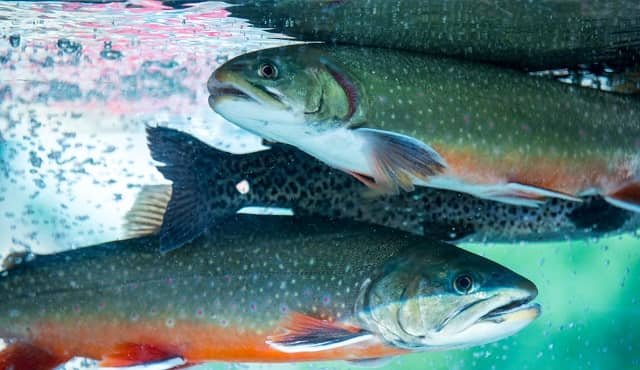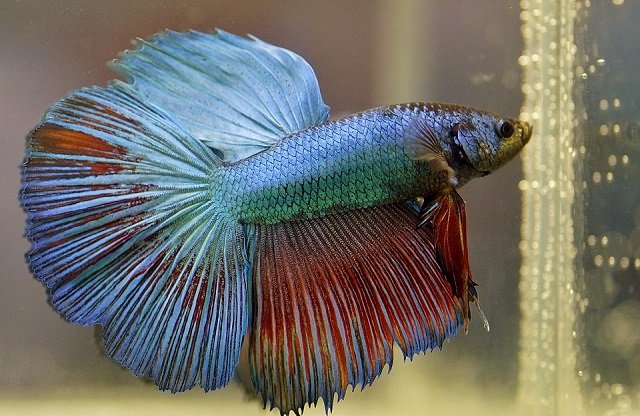
In the constant pursuit of more efficient and sustainable aquaculture, precision nutrition plays a fundamental role. Every feed additive counts, and its impact can be measured not only in growth performance but also in fish health and the quality of the product reaching the consumer. In this context, a recent study by researchers from Aksaray University has focused on a conditionally essential amino acid, glutamine, and its effect on female rainbow trout (Oncorhynchus mykiss).
The research explores how dietary glutamine supplementation can be a key tool for producers, enhancing growth performance, strengthening physiological health, and—a crucial factor—elevating the sensory quality of the fillets. Below, we break down the study’s findings and their practical implications for the industry.
What was investigated and how?
The primary objective of the study, published in the journal Veterinary Medicine and Science, was to evaluate the effects of adding different levels of glutamine to feed on the productive performance, blood parameters, oxidative balance, and final fillet quality of female rainbow trout.
To this end, researchers conducted a 60-day trial. A total of 360 trout were distributed into four distinct groups, each receiving a diet with a different glutamine concentration:
- Control group: 0% glutamine
- Group 1: 0.5% glutamine
- Group 2: 1.5% glutamine
- Group 3: 2.0% glutamine
During this period, growth rates were measured, and blood and muscle tissue samples were taken to analyze indicators of health and oxidative stress. Finally, a sensory evaluation of the fillets was performed by an expert panel.
Key findings: Enhanced growth and improved health
The results demonstrated that glutamine, particularly at higher doses, has a positive and measurable impact.
- Improved growth performance: Trout fed diets supplemented with 1.5% and 2.0% glutamine exhibited significantly higher final weight, weight gain, and a better feed conversion ratio (FCR) compared to the control group. This indicates that the amino acid optimizes the fish’s ability to utilize feed and convert it into biomass.
- Strengthened physiological health: Blood analyses revealed improvements in the treated groups. An increase in red blood cell counts, hemoglobin, and hematocrit was observed. Furthermore, total protein and albumin levels in the blood were higher, suggesting a better overall nutritional and physiological state.
- Reduced oxidative stress: A key indicator of cellular stress is malondialdehyde (MDA). In the study, MDA levels in muscle tissue were reduced in the fish that consumed glutamine, pointing to a greater antioxidant capacity and better oxidative balance, thereby protecting cells from damage.
Impact on fillet quality: An added value
Perhaps one of the most commercially relevant findings is the improvement in the sensory quality of the final product. The trained tasting panel evaluated the fillets from the different groups and concluded that those from trout supplemented with glutamine (particularly at the 1.5% and 2.0% levels) presented superior characteristics in terms of aroma, flavor, and texture.
This enhancement of organoleptic properties is a key differentiator that can increase the product’s market value.
Stay Always Informed
Join our communities to instantly receive the most important news, reports, and analysis from the aquaculture industry.
Conclusions and implications for trout aquaculture
The study decisively concludes that dietary glutamine supplementation, within a range of 1.5% to 2.0%, is an effective strategy for rainbow trout producers.
The findings support the practical use of glutamine as a functional additive that not only boosts growth and feed efficiency but also fortifies fish health and improves the sensory characteristics of the fillet. In production systems where fish may be subjected to stress or high metabolic demands, glutamine becomes a valuable tool for ensuring optimal development and a high-quality final product, aligning with the goals of sustainable and profitable aquaculture.
Contact
Mustafa Öz
Department of Fisheries and Diseases, Faculty of Veterinary Medicine, Aksaray University
Aksaray, Turkey
Email: ozmustafa@aksaray.edu.tr
Reference (open access)
Öz, M. and Inanan, B.E. (2025), The Role of Glutamine in Growth, Health and Sensory Quality of Female Rainbow Trout (Oncorhynchus mykiss). Vet Med Sci, 11: e70527. https://doi.org/10.1002/vms3.70527
Editor at the digital magazine AquaHoy. He holds a degree in Aquaculture Biology from the National University of Santa (UNS) and a Master’s degree in Science and Innovation Management from the Polytechnic University of Valencia, with postgraduate diplomas in Business Innovation and Innovation Management. He possesses extensive experience in the aquaculture and fisheries sector, having led the Fisheries Innovation Unit of the National Program for Innovation in Fisheries and Aquaculture (PNIPA). He has served as a senior consultant in technology watch, an innovation project formulator and advisor, and a lecturer at UNS. He is a member of the Peruvian College of Biologists and was recognized by the World Aquaculture Society (WAS) in 2016 for his contribution to aquaculture.




